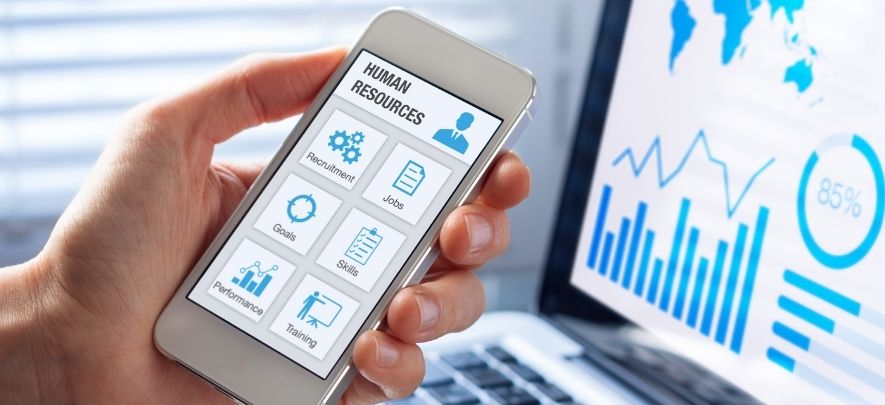5 ways technology can simplify HR, save time & reduce stress

Employment & HR
247 week ago — 6 min read
“Our people are our biggest assets!”
Almost every company says this. And the source is usually a manager or HR team member.
But HR professionals are people too. They feel the stress of deadlines. They feel motivated by praise and de-motivated by criticism. They’re looking for ways to help them do their work better and faster. And they too need ways and means to be more organised, more productive, less stressed and less overwhelmed. They deserve to be seen as assets too!
Technology can answer to all these goals:
1. It can help make HR practises less complicated, more efficient and most importantly – people-friendly.
2. It can help save time and effort, especially on repetitive or manual tasks.
3. And it can empower HR professionals to focus on what really matters – developing the people in their organisation so the organisation can consistently meet its goals.
Here are 5 ways technology can simplify HR, save time and reduce stress!
1. To automate payroll
Payroll is a critical function in any organisation. It can also be time-consuming, stress-inducing and error-prone. It requires meticulous attention to detail, accuracy and compliance with different regulations. With payroll, there is absolutely no room for error!
By using payroll automation technologies, HR can hasten the payroll process, reduce the likelihood of errors and even lower the cost of payroll preparation. Technology can simplify many complicated payroll tasks such as determining wage rates (regular and overtime hours, part-time work, freelancers, remote workers, etc), bonuses, arrears, wage increases, etc.
2. To access critical reports and analyse employee performance
In any organisation, the HR department fulfils a number of important functions. One such function is keeping track of employee behaviour and associated data in order to optimise their productivity. HR is also responsible for catching operational anomalies and ensuring that they are not repeated. One such anomaly could be employees working outside regular hours even if it violates company policy. Technology gives HR teams access to reports that can help them identify such productivity, behavioural and performance areas that need improving. They can create customised dashboards, access analytics and devise plans to mitigate potential problems even before they happen.
With the help of technology, HR can also analyse employees’ performance and use this information to help management make better decisions with respect to promotions, increments, transfers, layoffs, etc.
3. To simplify compliance management
All companies need to comply with the rules and regulations of their country/countries of operation. Ensuring this compliance is usually the responsibility of HR. However, it can be a complicated endeavour if done using manual means. Compliance mistakes could lead to financial damage (penalties) and loss of reputation that can hurt a company’s long-term health.
With the help of a Human Capital Management System, HR professionals can set up alerts to prompt them when certain compliance laws are being flouted (inadvertently or on purpose). Automating this process ensures that the company stays compliant with all the necessary regulations.
4. To streamline the hiring process
In the pre-Internet days, the recruitment process involved connecting with potential candidates through phone calls, letters and face-to-face meetings.
Today, HR can use technology to post job ads, analyse applicants, choose applicants for next steps and set up interviews. An online applicant tracking system frees up time that HR would have otherwise spent dealing with paper resumes or personal calls. With the help of technology, they can broaden their candidate pool and even consider candidates from other cities or countries. Technology saves time and effort during recruiting and increases the likelihood that the right candidate will be found for the right role.
Also read: Invest in Human Resources, grow your business!
5. Boost employee engagement, strengthen retention and prevent ‘brain drain’
A Human Resource Management System (HRMS) automates manual or repetitive HR tasks so HR professionals can carry out more strategic activities focused on employee engagement and retention. It helps break down unnecessary bureaucracy and involves employees in the firm’s decision-making process. It can also help with the induction of new employees, and enable HR teams to manage the training and development needs of existing employees. With an HRMS, HR can design programmes to enhance employee motivation and workplace morale across multiple geographies.
Is your HR team using technology?
Over the coming years, the scope of operations in the workplace will increase. They will become more complex and require employees to use their time in smarter, more efficient ways. Furthermore, as the organisation’s – and employees’ – needs evolve, the responsibilities of HR professionals will continue to grow.
By adopting technology, HR personnel can become more efficient in conducting tedious and complicated tasks. This will improve employees’ productivity, foster job satisfaction and create a workplace that promotes genuine well-being.
Also read: How automation will impact the HR professional
To explore business opportunities, link with me by clicking on the 'Connect' button on my eBiz Card.
Image source: shutterstock.com
Disclaimer: The views and opinions expressed in this article are those of the author and do not necessarily reflect the views, official policy or position of GlobalLinker
Posted by
Lion Amir ViraniTech Evangelist| Thought Leader | Social Entrepreneur | Enthusiastic Networker | Speaker| Startup Mentor
View Lion Amir 's profile
Most read this week













Comments
Share this content
Please login or Register to join the discussion